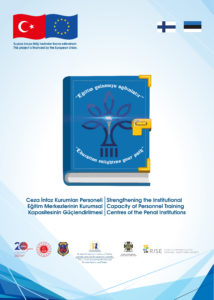Search inside Resources
Methodologies
- E-Learning (5)
- Reports/Presentations (52)
- Training modules/Database (20)
Topics
Author: Siim Poll
These are examples of a theory part in the final exam for vocational education level students. They start working in prison as guards.
It is based on Estonian legal regulations but is easily transferrable to any other country’s frame.
The student must analyse in written manner the case and figure out whether the prison officers act correctly.
Read more of part 1 of the exam here
Part 2 of the exam can be found here
Contributed by the Ecole nationale d’administration pénitentiare Département Gestion et Management
For the first time, the AFA and the Ministerial Statistical Service for Internal Security (SSMSI) are jointly publishing a study on breaches of probity. This publication is part of the objectives of the National Multi-Annual Anti-Corruption Plan (PNPLC) 2020 to 2022, published on 9 January 2020. In France in 2021, the police and gendarmerie recorded 800 breaches of probity. Between 2016 and 2021, they increased by 28%, or an average of 5% per year.
These offences include corruption, influence peddling, illegal acquisition of interest, misappropriation of public funds, favouritism, and embezzlement. The increase in breaches of probity is linked in particular to corruption offences (+46% over the period), which account for almost a third of all such breaches. Public corruption accounts for 68% of these cases. Active bribery (17%) is slightly more common than passive bribery (12%). Other offences are often committed in conjunction with offences related to breaches of probity; half of these related offences involve fraud or deceit.
Read more here
Contributed by the Ecole nationale d’administration pénitentiare Département Gestion et Management
Technology is omnipresent in our daily lives; its use has become commonplace and its limits less and less questioned. Redefining our relationship with time and space, it is often presented and perceived as promoting productivity and giving us a sense of freedom, immediacy, and ease. The appeal of technology is not new, and it’s growing all the time; this is particularly true of security technologies, which are increasingly present in public discourse, policy, and practice.
This article looks at the deployment of technology in penitentiary environments through a socio-technical approach that goes beyond a functional study. It is based on a reflection from my doctoral thesis on the privacy of incarcerated persons in Québec provincial prisons, which led me to question technology as a potential solution to intrusive practices. The text that follows is an extension of this reflection to the French penitentiary context and invites readers to question the use of technology in prisons: beyond their functionalities, what do they produce? It does not seek to engage in what would necessarily be a sterile and reductive debate for or against technology”, but attempts to offer an analysis that goes beyond the material aspects of technology to understand it in all its complexity.
Read more here

A joint twinning project „Strengthening the Institutional Capacity of Personnel Training Centres of the Penal Institutions in Turkey“ between Finland, Estonia and Turkey in 2022. Click here to read the full description about the EU twinning project.
Among other activities, some handbooks and manuals were developed: (more…)
The training guides for the different professional penal execution collectives use highly innovatory methodologies, since they perform a systematic task of indentifying professional competences, which are directly related to the behaviours considered indispensable for carrying out the activity correctly. (more…)
Search inside Resources
Methodologies


Supported by the Justice Programme of the European Union
